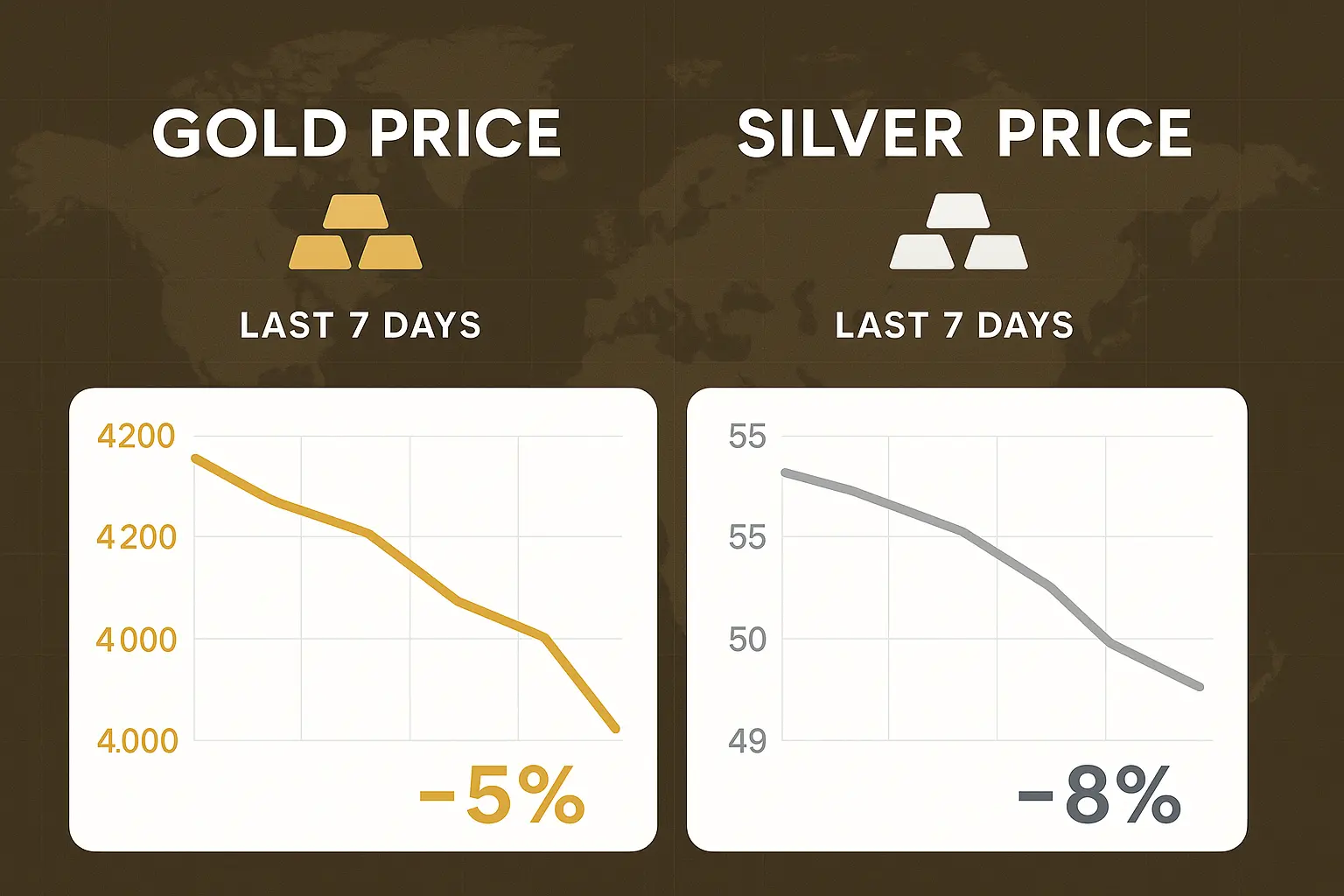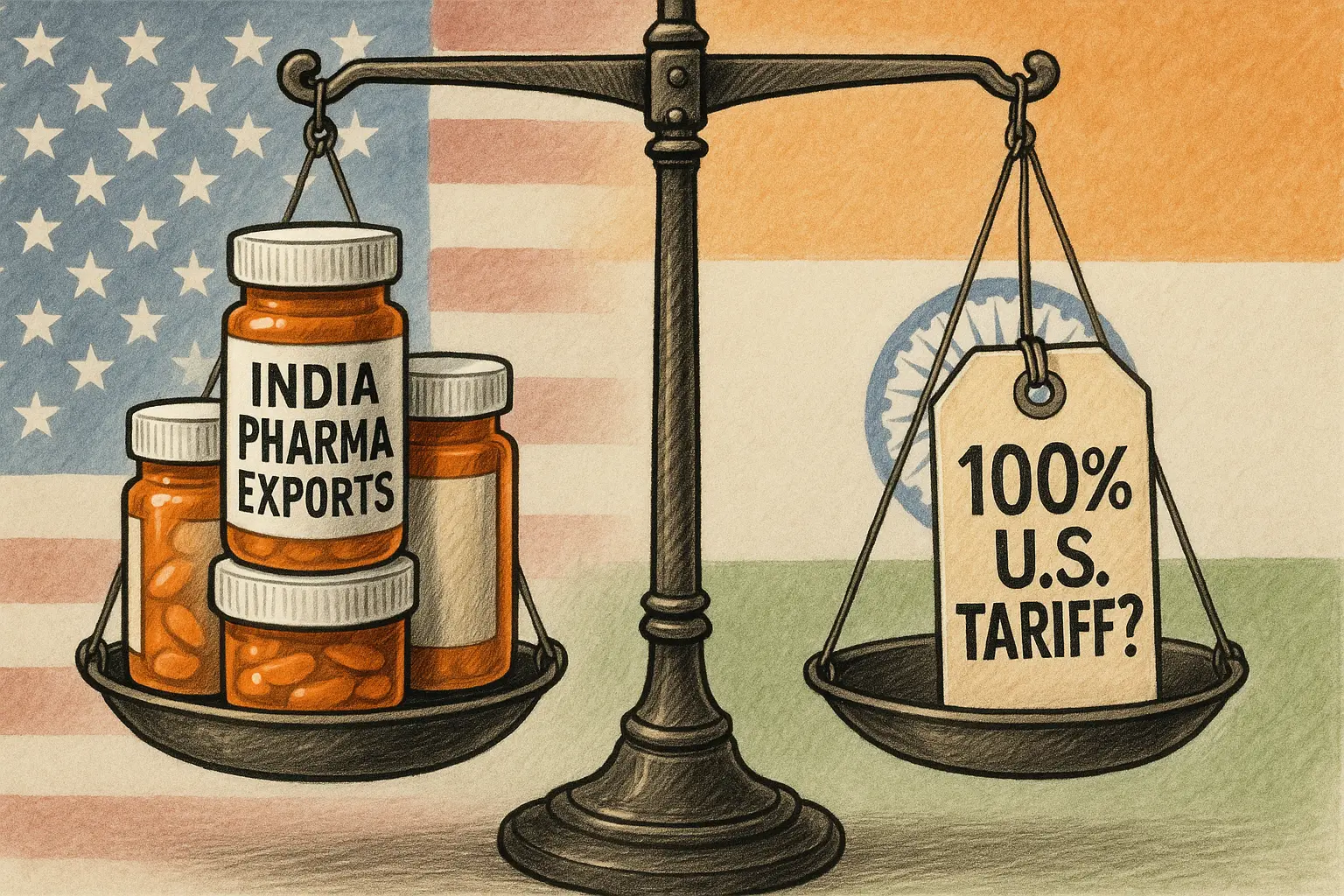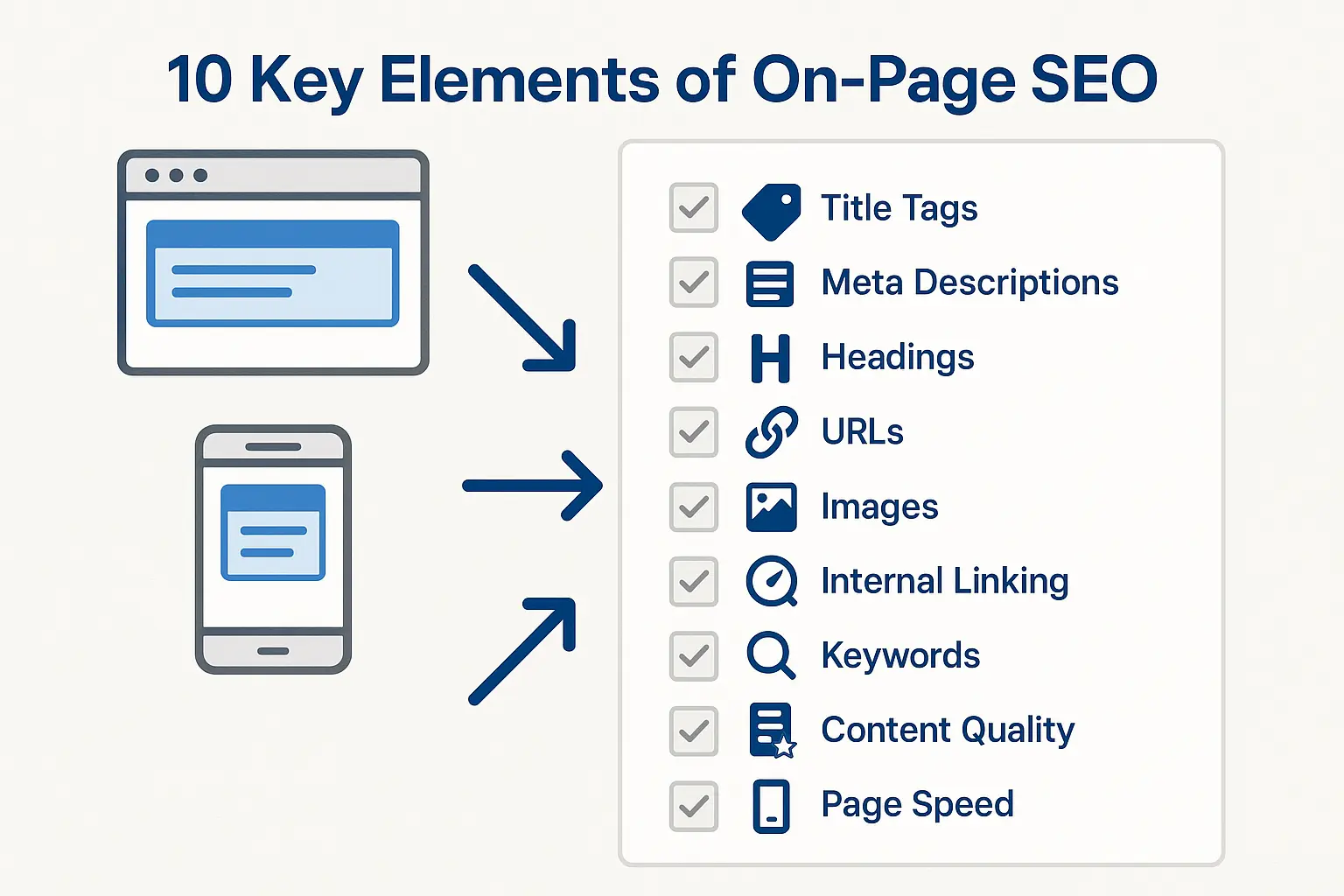Gold and Silver Prices Crash: Causes, Impact, and What Comes Next

In recent days, gold and silver have dominated financial headlines — but not for the usual reasons. After months of record-breaking rallies, both metals suddenly plunged, marking the steepest single-day fall in more than a decade. Gold fell over 5–6.5%, and silver dropped nearly 12% in just two days. For investors, traders, and curious onlookers alike, this unexpected correction has raised big questions: What caused this crash, and what comes next? Check Gold Price->
The Sudden Fall: A 12-Year Record Broken
On October 21–22, the global bullion market witnessed an unprecedented sell-off. According to data from the World Gold Council and major exchanges, gold experienced its largest one-day decline since 2013, dropping to around $4,000 per ounce, while silver slipped to $47–49 per ounce after touching $55 earlier in the month.
In India, gold prices fell by nearly ₹8,000 in a single trading session, reflecting the international trend. For many investors, this sharp reversal came as a shock — especially after gold had surged more than 50% since January.
Why Did Gold and Silver Prices Crash?
1. Profit Booking After an Extraordinary Rally
From January 2025 to mid-October, gold prices in India climbed from ₹78,000 to over ₹1.32 lakh per 10 grams — a rise of more than 65%. Similarly, silver nearly doubled. Such rapid appreciation often attracts speculative traders, who buy low and sell high. Once the prices peaked, a wave of profit booking hit the market, triggering an automated sell-off across global exchanges.
2. Reduced “Safe-Haven” Demand
Traditionally, gold and silver attract investors during geopolitical or economic uncertainty. Recent signs of potential stability — including U.S.–China trade talks and improving macroeconomic data — have temporarily reduced the urgency to hold safe assets. As optimism returned to equities and bonds, traders began reallocating funds, causing bullion prices to fall.
3. Strengthening the U.S. Dollar and Interest-Rate Expectations
The U.S. dollar index strengthened against other major currencies, making dollar-denominated commodities like gold more expensive for international buyers. Meanwhile, the U.S. Federal Reserve signalled that interest-rate cuts may be smaller than expected, which improved yields on bonds and drew investors away from non-yielding assets, such as gold.
4. Technical and Algorithmic Factors
Modern commodity markets are heavily influenced by algorithmic and leveraged trading. When gold prices broke below key technical levels (around $4,200/oz), automated sell signals were triggered, accelerating the decline. Futures and options markets experienced large liquidations, similar to those that occurred during the 2013 correction.
5. ETF Liquidation and Institutional Outflows
Exchange-traded funds (ETFs) — a popular vehicle for exposure to gold — reported heavy outflows as institutions rebalanced portfolios. This further amplified price pressure. Silver, being a smaller and more volatile market, was hit even harder, showing larger percentage swings.
Historical Parallels: Lessons from 2013 and 1979
This 2025 crash echoes past market cycles. In 2013, gold prices fell by nearly 7% in a single day amid fears of U.S. monetary tightening. Going further back, 1979–1980 saw the most dramatic correction in history — a staggering 70% decline in gold prices after a long speculative boom.
However, most analysts agree that 2025 is unlikely to repeat that extreme scenario. Unlike in 1979, central banks today maintain substantial gold reserves, and industrial demand (especially for silver in solar and electronics) remains strong. Yet, short-term volatility is expected to continue.
Key Support and Resistance Levels
As of this writing, analysts are watching two major price zones:
- Gold: Support near $3,800–4,000/oz, resistance around $4,200/oz
- Silver: Support near $48/oz, potential range between $45–53/oz
If prices stay above these supports, a consolidation phase may follow. But a sustained break below $4,000 for gold could lead to a deeper correction toward $3,500.
Impact on Different Stakeholders
• Long-Term Investors
For long-term investors, such volatility is normal. Gold remains an important hedge against inflation and currency depreciation. A balanced portfolio should ideally include a 5–10% allocation to gold, either via physical assets or ETFs.
• Short-Term Traders
Traders who rely on short-term momentum may face higher risks. Increased volatility can quickly erase gains. Experts recommend setting tight stop-loss levels and avoiding over-leveraged positions.
• Indian Buyers and Jewellers
For consumers and jewellers, this dip could be a temporary buying opportunity. Many who missed the earlier rally may use the correction to accumulate gold at relatively lower prices — especially before the wedding and festive season.
What Could Happen Next?
- If the Dollar Stabilises: A stable U.S. dollar and renewed central-bank buying could help gold rebound toward $4,200–4,300 per ounce.
- If Economic Data Weakens: Any slowdown in global growth could revive safe-haven demand, supporting prices.
- If Interest Rates Stay High: Prolonged higher rates could delay a strong recovery, keeping gold range-bound between $3,800 and $4,200.
In short, gold and silver are likely entering a consolidation phase after an overheated rally — not necessarily a long-term downtrend.
A Broader View: Why Gold Still Matters
Gold’s fundamental appeal lies in trust, scarcity, and universal value. Despite temporary corrections, it continues to perform as a store of value during uncertain times. Silver, though more volatile, plays a growing role in renewable technologies — linking traditional assets with the clean-energy future.
For investors and learners, the key takeaway is clear: volatility creates opportunity, not panic. Sound asset allocation, research, and patience remain the best defences against market noise.
Conclusion
The recent gold and silver crash is a timely reminder that even the most stable assets face market cycles. While short-term traders may see red screens, long-term investors can view this as a reset — a chance to reassess portfolios and accumulate wisely.
Gold’s long-term fundamentals remain intact; only sentiment has shifted. The market will stabilise as fundamentals and demand realign.
This article is based on publicly available reports and independent analysis. Readers are encouraged to consult multiple sources for a complete picture.









No comments yet. Be the first to comment!